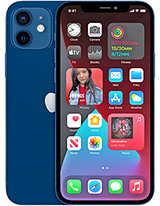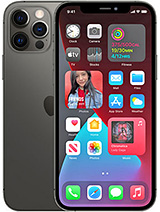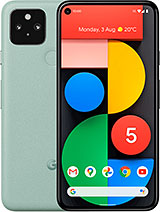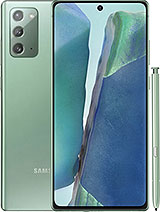iPhone 12 Pro vs Galaxy Note 20 Ultra vs Pixel 5 Low Light Camera Test Comparison! By Danny Winget
What's up everybody, this is Danny, and today I have a very exciting camera comparison between the pixel 5, the brand new iPhone 12 Pro and the Samsung Galaxy note 20 ultra. So during the day, most flagships can take amazing, video and photos. So I wanted to concentrate on low light this time. So what I want to do is I just want to test it out in every condition at night and see which one is better. So let me know what front-facing video looks better. Let me know what microphone sounds better, and then we're going to see who the low-light king is in the end of 2020.
Let's go ahead and do this all of these photos and videos were taken on auto mode to keep things fair, but if you have the time to dial in that perfect shot, only the note 20 ultra has a pro mode built in there will be full camera comparisons with the pixel 5 and note 20 ultra against the iPhone 12 Pro separately with daytime images, so make sure you subscribe, because you don't want to miss that, let's start with the images without night mode. This is to show you what the sensor can do, because not all the time do you want to take pictures with night mode, since that does usually have anywhere between a one to four-second delay on normal shots, but can be much longer depending on the scenario since the pixel 5 has the oldest sensor out of the bunch. It is the noisiest out of the three when you punch in you can really see it. The iPhone has a nice black sky rendition at night, and the note has great noise reduction when the sky is clearly defined dark. I think the iPhone 12 Pro does the best job of making it look realistic with a dark sky, but when the clouds are present with mixed light sources, I think the note 20 ultra has the best balance of noise reduction, sometimes that noise reduction can come with the cost of softer details.
When you crop in heavily into this balloon, you can see how the iPhone does let noise happen but retains more detail on the subject, but I think the note 20 ultra has the best in between out of the two, but I think that this is going to be personal preference, since most people do not crop in this heavy. This is only to show you the differences. On the other hand, the note 20 ultra has the largest sensor, and you can see that when you're looking at the both or background separation, it has a narrower focus point, but that natural background blur looks fantastic. These three cameras sometimes produce pictures that are so similar that you really can't tell them apart and then sometimes they just land all kinds of different. On white balance, I would call a trend on white balance, but it does go back and forth, so this is definitely going to be a personal preference thing when turning on night mode.
This is where things get interesting. They all do a great job of capturing, more detail and lighting up the entire scene. But, technically speaking, it looks like the note.20 ultra has the clearest shot with the best noise reduction. This building was really far away but cropping in heavily. You can really see the detail retained by the note 20 ultra the pixel 5's night mode really saves the nighttime photography experience, and I would leave the auto night mode on, because, if you don't use it, you will end up with some really noisy pictures.
That being said, it's pretty amazing. How well the pixel 5 keeps up with older hardware, goes to show you how far computational photography can take you, and while I felt like it used to leapfrog the competition when it comes to low-light photography, that is just no longer the case. Look at how much sharper the note 20 ultra is and the iPhone 12 Pro is now don't get me wrong. The pixel 5 is not bad in any way, and sometimes it does create the best shot without the artificial over sharpening that the note 20 ultra sometimes suffers from, and I even feel like the pixel 5's red color rendition is the best this year it used to be the iPhone, but I'm not sure what happened with the processing you can see when you switch back to the ultra-wide that red color comes back, so I'm sure this can be fixed in a software update. But after looking at a ton of images side by side, I feel the competition has caught up to google and even surpassed it in certain areas.
This year the iPhone 12 lineup finally gets night mode across all the cameras with deep fusion, including the ultra-wide last year. Nighttime ultra-wide shots were super soft and muddy on the iPhone, and it was pretty frustrating to say the least, but this year we finally get night mode on the ultra-wide in moderate low light. It looks fantastic. In fact, they all do. So.
I think a lot of people will be happy with either one. I still don't think the iPhone's night mode ultra-wide shots are as sharp as the note 20 ultras, but what a huge improvement this year, where I think this is one of the reasons to upgrade the front-facing camera also has night mode across all three of the phones this year and all of them do a good job, the pixel, with more saturation to make the selfie pop the iPhone with more shadow detail. But the note 20, ultra still with the sharpest overall shot sorry about this shot. I didn't realize that portrait mode was on the pixel.5. looks fantastic though skin tones at night is a tough one.
They are all different, but the iPhone had the best accuracy here. Okay, so let's go to night mode portrait shots. They all look pretty great when there is adequate lighting, but pro-tip on the iPhone. The night mode portrait shot only works on the 1x and not the 2x. So keep that in mind with the 2x it's going to be pretty noisy.
I'm sure this is reserved for the 12 pro max props to the pixel for nailing this one with its night portrait mode, there's no night portrait mode on the note 20 ultra, yet the note 20, ultra even without portrait night mode, did well brightening up my wife's skin, where I feel like the pixel 5 landed in the middle with a little of a softer picture, while the iPhone went aggressive with the background blur. So let me know which one that you like better in the comment section below even with non-human subjects, the night mode portrait shots, can create a cool picture. The portrait night mode really makes the scene brighter on the pixel 5. So it looks awesome. The note looks great as well and the iPhone I should have gotten a little closer, but this is show you the wider perspective that you're going to get with the night mode portraits, since you do need to shoot with the wide main sensor when it comes to zoom shots.
The pixel 5 is cropping in on the main sensor, so there is no telephoto, but it does a great job anyways. The iPhone has 2x optical zoom and the note 20 ultra has a whopping five times. Optical zoom, which really is handy sometimes what's cool, is that there is night mode under every focal length across all of these cameras this year, which is a first for apple, so results are so much better, but that 5x zoom with night mode with this type of sharpness is awesome. When looking at the zoom pictures, I did notice that the note 20 ultra had better dynamic range. Take a look at these lights.
I was surprised to see the clipping here on the iPhone 12 Pro. This is usually not the case with smart HDR. I had to take this photo a couple of times. I think they need to refine the processing slightly, and I'm sure they will fix it. The pixel was doing it here too, but the Samsung really nailed it here where google wins is on long exposure and macrophotography.
I only took a few shots, but the pixel exposed for over two minutes, the iPhone for seven seconds and the Samsung at 20 seconds so impressive for apple and Samsung here, but when the sky was more open under the same exposure times the pixel really flexed. With that extra sharp star detail, I mean it did expose for two minutes but impressive nonetheless. So the final thing is video and I think this one is absolutely clear. This is 4k 30 frames per second across all cameras that you're, seeing what's crazy is the pixel 5's dynamic range is killing it look at the windows into that shop. I was actually surprised, but the video is much noisier on the pixel and the note 20 ultra, while the iPhone's video is nice and crisp still with the best overall control of the scene.
Look at the rainforest caf? sign it's not blown out. The noise is under control. It's really impressive. Here's another look at dynamic range. Look at the moon, it's perfectly visible with cloud detail, while the other two cameras are struggling with noise, it's almost like it isn't fair, but punching in heavily.
It really shows you how different this really is. So, if you're a nighttime video shooter, you need to go with the iPhone, and this is not under Dolby Vision. HDR. By the way just standard video with HDR turned off walking, nighttime video. I think the iPhone does better on stabilization as well.
You can really see it here more than the other example of how much better the video quality is. Here is also an example of nighttime time-lapse on the iPhone 12 Pro nighttime hyper lapse, looped on the note 20 ultra, since they aren't exactly equal on playback times it's between the Samsung and apple here, but I think the iPhone has the best balance of sharpness detail and contrast. So I think all around the nighttime video goes to the iPhone 12 Pro. So at the time of this video for nighttime photography, I would have to give the slight edge to the note 20 ultra overall, that last software update really helped, and I think the night mode is the best out of the three. It has the best night mode for wide angle and balances.
The best between the detail and noise reduction, the pixel 5, though, is the cheapest out of the three and still keeps up great with older hardware and keeping up and sometimes beating the best says a lot. But when it comes to the video, the iPhone 12 Pro wins it hands down. So it's a hard choice. This year, you really need to look at the overall phone and not just the camera this time, because they're all pretty great, let me know which one that you think took it in the comment section below hit that thumbs up if you enjoyed it, subscribe for a lot more camera comparisons like this one in the future- and I will see you in the next one.
Source : Danny Winget




























